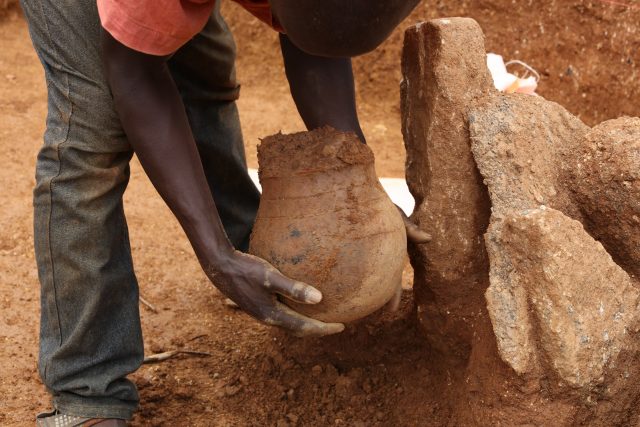AI detects sunken ships with 92 percent accuracy from the sky. The AI is now ready for more extensive tests in unknown regions to look for shipwrecks still missing.
In collaboration with the United States Navy's Underwater Archaeology Branch, I taught a computer...
Archaeologists have discovered a rare stone delineating the city limits of ancient Rome that dates from the age of Emperor Claudius in 49 A.D. and was found during excavations for a new sewage system.
Rome Mayor Virginia Raggi was on...
Evidence continues to mount that our Neanderthal brethren may have been more sophisticated than we give them credit for. Artsy even. And researchers point to a 51,000-year-old deer bone as proof.
The design may be simple, but a chevron pattern...
Aboriginal memory tools might be one of the most efficient ways to keep facts memorized. Studies show that learning and memorizing techniques by Australian aboriginal people are more effective in the retention of facts compared to the "memory palace"...
Despite being home to the earliest signs of modern human behavior, early evidence of burials in Africa are scarce and often ambiguous. Therefore, little is known about the origin and development of mortuary practices in the continent of our...
Few sites in the world preserve a continuous archaeological record spanning millions of years. Wonderwerk Cave, located in South Africa's Kalahari Desert, is one of those rare sites. Meaning "miracle" in Afrikaans, Wonderwerk Cave has been identified as potentially...
A long-awaited, high-tech analysis of the upper body of famed fossil "Little Foot" opens a window to a pivotal period when human ancestors diverged from apes, new USC research shows.
Little Foot's shoulder assembly proved key to interpreting an early...
In the rugged province of Xieng Khoaung in upper northern Laos are scattered more than 2,000 large carved stone jars. They vary in size, with the biggest standing at just over 2.5 meters tall and weighing in at 30...
Honey is humankind's oldest sweetener - and for thousands of years it was also the only one. Indirect clues about the significance of bees and bee products are provided by prehistoric petroglyphs on various continents, created between 8,000 and...
The field of ancient DNA has revealed important aspects of our evolutionary past, including our relationships with our distant cousins, Denisovans and Neandertals. These studies have relied on DNA from bones and teeth, which store DNA and protect it...
A team of scientists, led by the University of Bristol, with colleagues from Goethe University, Frankfurt, has found the first evidence for ancient honey hunting, locked inside pottery fragments from prehistoric West Africa, dating back some 3,500 years ago.
Honeybees...

















